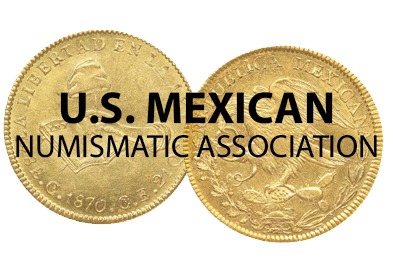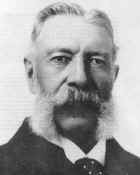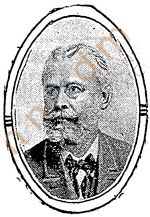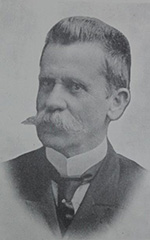Signatories of the Banco de Querétaro
Gerente
|
Juan Camargo was appointed Director Gerente on 1 June 1903 on an annual salary of $5,000 and free accommodationAGN, SC244 Antiguos Bancos de Emisión, caja 112, libro 315. He signed the first batch of notes dated 1903. Camargo resigned on 15 May 1904informe of Interventor Tejeda, 9 July 1904 Memoria de la Instituciones de Crédito, correspondiente a los años de 1904-1906. Agustín Arnaud temporarily took over as managerEl Tiempo, Año XXI, Núm. 7,108, 24 June 1904. |
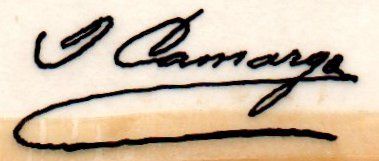 |
|
Carlos Kofahl was born in 1975, the son of Carlos Kofahl, a German businessman in Colima. Kofahl was chief clerk for the Mutual Life Insurance Company and resigned in March 1898 to enter the employ of G. and O. Braniff & Co., in their Yucatan dye-woods industryThe Two Republics, 29 March 1898. He took up this post on 15 June 1904informe of Interventor Tejeda, 9 July 1904 Memoria de la Instituciones de Crédito, correspondiente a los años de 1904-1906; La Sombra de Arteaga, 29 June 1904. He resigned at the beginning of June 1910, to be succeeded by Francisco Sánchez, and moved to JaliscoEl Imparcial, 13 June 1910. He signed the notes dated 1905. |
 |
|
Francisco Sánchez had been the manager of the Irapuato branch of the Banco de Guanajuato and joined the bank in June 1910El Imparcial, 13 June 1910. Sánchez resigned on 12 January 1914El Pais, 14 January 1914. He signed some $100 and $500 notes dated 1910. |
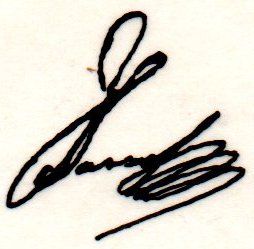 |
|
John Gibson took over as manager on 12 January 1914El Pais, 14 January 1914. He signed notes dated 1914. |
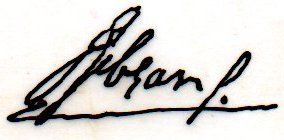 |
Consejero
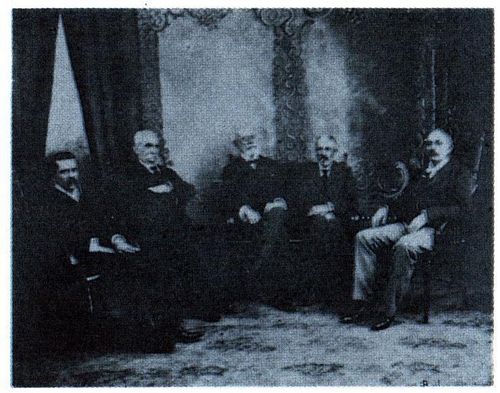
Concesionarios of the Banco de Querétaro: Alfonzo M. Veraza, Agustín Arnaud, Nicolás del Moral, F. Urquiza and Guillermo Obregón
(from El Porvenir, 1907)
|
In November 1900 Agustín Gastinel, Agustín Arnaud and Francisco Urquiza were granted a concession to use water from the Lerma river, in Maravatio, Michoacán, to generate electricityThe Mexican Herald, vol. XI, No. 31, 20 November 1900. He died on 26 July 1907 in Paris, France, where he had gone for his healthLa Sombra de Arteaga, Año XLII, Núm. 26, 29 July 1908. |
 |
|
He was diputado suplente for Veracruz in 1898 and for Tabasco in 1898 and 1900, and diputado propietario for Veracruz in 1900, 1904, 1908 and 1910. He died in Mexico City in 1928 at the age of 70. His son, Guillermo, married the daughter of Ramón Corral, Díaz’s vice-president. |
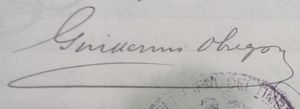 |
|
On 7 June 1900 Francisco J. Urquiza opened a factory to make bricks, pipes, pots and ornamental pieces in the hacienda de Jurica. Adjoining it he established a carpentry and body shopLa Sombra de Arteaga, 9 June 1900. On 9 November Urquiza was authorised to establish an electric streetcar from his hacienda de Jurica to the railway station. Francisco J. Urquiza was a regidor propietario of Querétaro in 1917 and 1918 and interim Presidente Municipal from January to May 1919. |
 |
|
Honey married Emma Jane Phillips, another Cornish immigrant and had four sons and five daughters. His main residence was in Mexico City, where he founded the Jockey Club. He also founded the Reforma Athletic Club in Pachuca. During an illustrious career Honey was the president of three banks, an iron and steel works, two mining companies, a paint factory and was a director of two railway companies, the Ferrocarril Nacional Mexicano and the Ferrocarril de Pachuca-Tampico. Honey was known for the treatment of his workers, including always paying 25 centavos a day when the minimum wage was 18 centavos, and his humanitarian efforts to help the indigenous population. Unfortunately, some of Honey’s investments ultimately failed, the revolution increased his misfortunes and he died on 12 June 1913 practically penniless. |
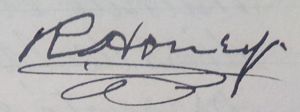 |
|
He was a founding member and vocal propietario of the Compañía Mexicana de Petroleo “La Esperanza”Its President was Guillermo Brockmann and primer vocal Thomas P. Honey (El Imparcial, 1 March 1914). He died on 19 August 1915The Mexican Herald, Año XX, Núm. 7,275, 21 August 1915. |
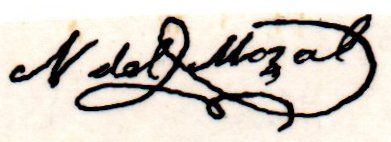 |
|
Trinidad Rivera Olvera was born in Querétaro on 30 August 1826 and in his youth worked with dstinction in the grocery store “La Lonja”. He was a noted agriculturist and owned the hacienda de Casablanca, anexa al Jacal. He ran unsuccessfully for governor in October 1875 and served as Prefecto Político of the Distrito del Centro from MarchEl Siglo Diez y Nueve, 15 March 1877 until November 1877El Siglo Diez y Nueve, 15 November 1877. In August to September 1887 he served as substitute governor of Querétaro, before handing over to the new governor, Francisco González de Cosío. He was a distinguished philanthropist. He founded and paid for a primary school for poor children, opened on 30 July 1905 at calle del Rastro núm. 1 (now the Casa de Leones, which went on to house the Instituto Comercial de Querétaro and Biblioteca Central), and at the time of his death had almost completed a commodious, elegant building to serve as an old people’s home. He died on 11 June 1911La Sombra de Arteaga, 15 June 1911. |
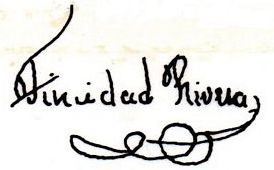 |
|
He was a vocal suplente of the board in 1905. |
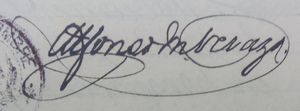 |
|
José Antonio Legarreta Legarreta was born on 30 October 1844, in Bozate de Arizcun, Spain. He had estates in Querétaro, including the hacienda de MontenegroLa Sombra de Arteaga, 9 September 1906, and was a “very industrious and intelligent farmer” as well as a leader of the Spanish community in Querétaro. He died on 4 September 1907, in Querétaro at the age of 62La Sombra de Arteaga, 4 September 1907. He signed notes dated 1905 and 1906. |
|
|
José María Calvo He signed $100 notes dated 1 September 1910. |
 |
|
Mariano B. Taboada He signed $500 notes dated 1 September 1910. |
 |
|
Aurelio Camacho He signed $1 notes dated 1914. |
 |
|
J. Garcia He signed $1 and $2 notes sated 1914. |
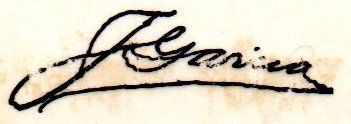 |
|
Rodrigo Castelazo y Fuentes was consejero suplente of the Banco de Guajuato in 1912 and 1913 and signed notes dated from 1912 to 1914. He signed notes for this bank dated 1914. |
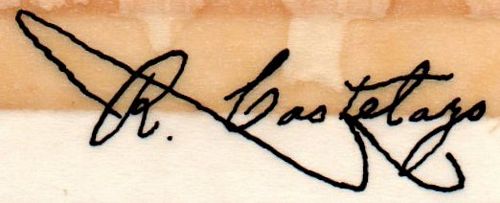 |
|
Marcel Joseph Marie Barré de Saint-Leu was born on 17 March 1872 in Mirande, in southwestern France. Barré de Saint-Leu worked for the Banco de Guanajuato. He was appointed Inspector de Sucursales for the bank on 26 May 1913 but on 5 June 1913 was promoted to be its new managerAGN, SC224, Antiguos Bancos de Emisión, caja 8, libro 13. He signed notes dated 1914, on some of which his signature replaced previous signatures He died in Mexico City on 25 October 1920. |
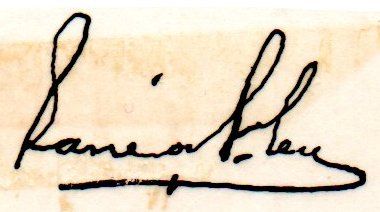 |
Interventor
|
Eleuterio Tejeda was a carreer civil servant. In 1896 he was an engineer in the department of communications and public works, responsible for inspecting railways in March 1896The Mexican Herald, 24 March 1896: The Mexican Herald, 9 April 1897 Tejeda signed notes dated from 1903 to 1910. In 1923 he was in charge of the Technical Section of the Dirección de Bienes Nacionales. This covered everything related to budgets, appraisals, survey of plans, technical issues, payments to operators, the sale of scrap furniture and materials, etc.Orientación, Año II, Vol. II, Núm. 30, 16 September 1923. |
 |
|
Manuel del Villar In November 1910 del Villar was apoderado of the Compañía Bancaria de Fomento y Bienes Raíces de MéxicoDiario Oficial, Tomo CXIII, Núm. 24, 28 March 1911 del Villar was signing the balance sheet by Ocrober 1913 and signed notes dated 1914. |
 |
